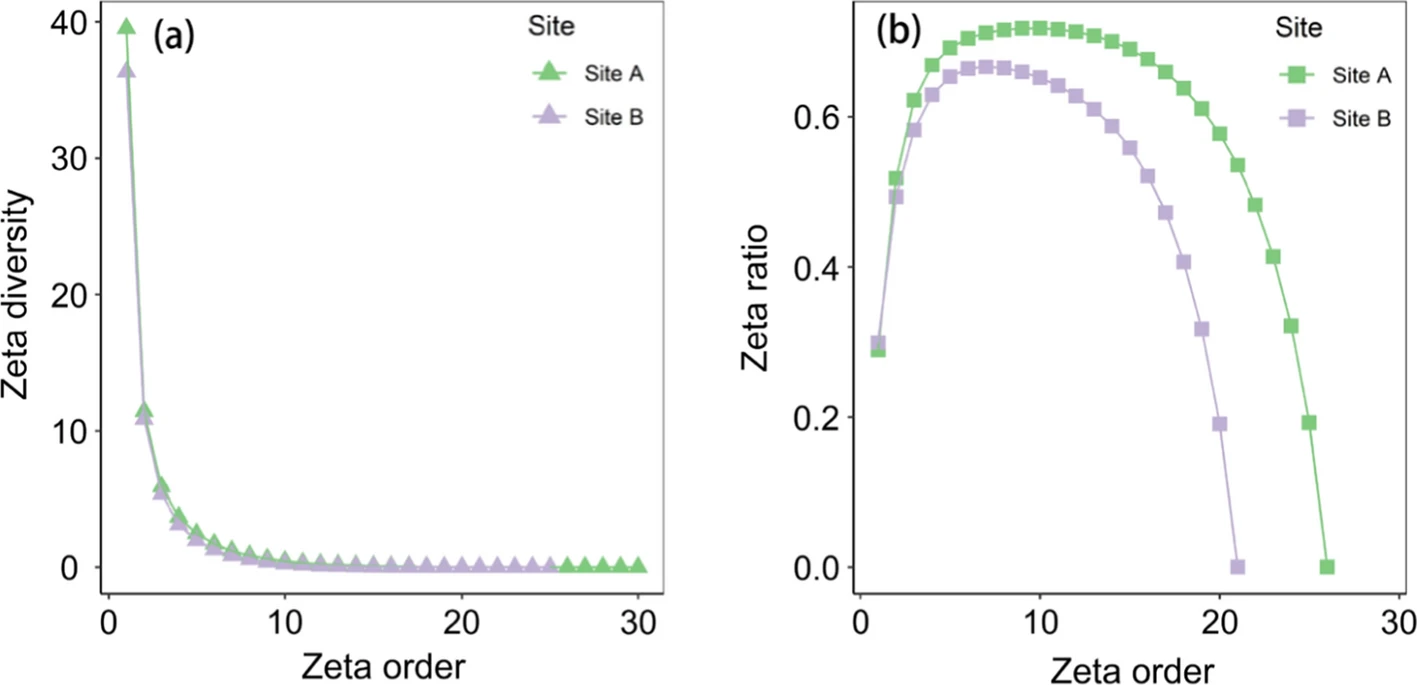Studying the mechanisms of species turnover is key to understand community assembly in ecology. However, it is rarely investigated through calculating similarity of composition across multiple sites from perspective of trophic interactions. As one of key types of trophic interactions, the understanding of co-turnover for plants and herbivores could be hampered by the limitation of traditional beta diversity analysis, which compared community dissimilarity through pairwise communities. The ‘zeta diversity’ concept provides an approach to overcome these problems. It quantifies the degree of overlap of composition considering the full spectrum of species by explicitly taking into account rarity and commonness, through describing changes in compositional turnover with similarity rather than dissimilarity.
In this study, Dr. Ming-Qiang Wang and the other members from Prof. Chao-Dong Zhu’s Lab used multiple-site generalized dissimilarity modelling to examine the compositional turnover (denoted as zeta diversity) pattern of a key herbivore assemblage—Lepidoptera larvae—in our BEF-China experiment (Fig. 1). They found (1) herbivore species composition rapidly changed even at the fine spatial scales (Fig. 2); (2) herbivore compositional turnover is significantly affected by tree phylogenetic composition and functional traits rather than tree species richness and abiotic factors (Fig. 3); and (3) these effects of the deterministic factors varied with the increasing number of study sites because of the differential contributions of rare/specialized and common/generalized species (Fig. 3).
These results highlight the significance of phylogenetic composition and functional traits of host plants in the process associated with changes of species turnover to herbivore community assembly in plant-insect systems at local scales. The study contributes to developing a more comprehensive understanding of mechanisms underlying changes in herbivore communities and its main drivers for key assemblages in highly diverse forests.

Fig. 1 Summary of zeta diversity (the degree of overlap of composition) paradigm in the study.

Fig. 2 Zeta diversity decline (a) and retention rate curves (b) for Lepidoptera herbivore assemblages in the two study sites.

Fig. 3 Results of the multi-site generalized dissimilarity modellings examining the impacts of differences in environmental variables and spatial distance on compositional turnover of Lepidoptera herbivores at different number of plots (zeta order, ζ); ζ3 (a), ζ5 (c), ζ8 (e), ζ12 (g) for site A and ζ3 (b), ζ5 (d), ζ8 (f), ζ12 (h) for site B.
Literature:
Ming-Qiang Wang, Zhixin Wen, Jinzhao Ke, Douglas Chesters, Yi Li, Jing-Ting Chen, Arong Luo, Xiaoyu Shi, Qing-Song Zhou, Xiao-Juan Liu, Keping Ma, Helge Bruelheide, Andreas Schuldt*, Chao-Dong Zhu*. 2023. Tree communities and functional traits determine herbivore compositional turnover. Oecologia. 203: 205–218. https://doi.org/10.1007/s00442-023-05463-1.

